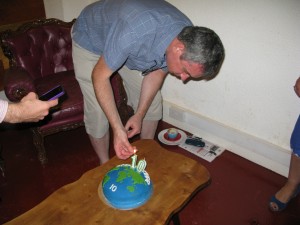A long and as usual heated debate took place recently amongst the UK OSM community about the status of place nodes within large cities, prompted by a mapper changing a large number of place names to a blanket tag of place=suburb in London and Birmingham. The defence was that an OSM wiki reference that said this was the proper way to do things. Naturally, the situation on the ground is more complicated than this and the upshot was a revert. The heat and light generated by the debate and the nuances of the various threads of the argument needn’t concern us here, interesting though they were
What is more important is to concentrate on just what status the content of an OSM wiki page has.
In my opinion the content of a wiki page is:
1. as close to authoritative as possible but NOT AUTHORITATIVE
2. for guidance only: it is NOT MANDATORY
3. reflects only the collective opinion of the editors of the page (and there may be very few editors, or very many but still not representative) and not the collective opinion of the wider community.
4.subject to local knowledge and ground surveys which ALWAYS TAKE PRIORITY OVER WIKI CONTENT
5. to be ignored only after careful thought and suitable tagging with a note= xxx tag to explain the exceptional circumstance
6.not to be used as a basis for routine automated edits: see OSM policy on automated edits which requires discussion with the community affected and the reaching of a consensus before proceeding
As ever OSM mapping is all about mapping truthfully what you see on the ground and reflecting any local knowledge you either have personally or have gathered from local residents. (Copyright-free authoritative sources can also be used – how else are we to add boundaries?)
One good suggestion made to me was that if you are in doubt about how to tag an object and the wiki isn’t clear or doesn’t fit your situation, a quick search of taginfo will let you discover how other mappers have tagged it. Or you can discuss your problem with your national OSM talk email list.
Don’t just assume the wiki is the ONLY way to do things and must be adopted whatever the circumstances.
Probably for 99% of the time the wiki can be relied on – it’s just the other 1% has so much potential for causing mayhem.
“Mapping for the renderer” is frowned upon. Should we also frown on “mapping for the wiki?”
To those who spend considerable energy and expertise editing wiki pages: thankyou. This is not to belittle your efforts, just adding a cautionary note. And I know that improving wiki pages is down to everyone but as ever it’s much more fun to be doing than documenting.






